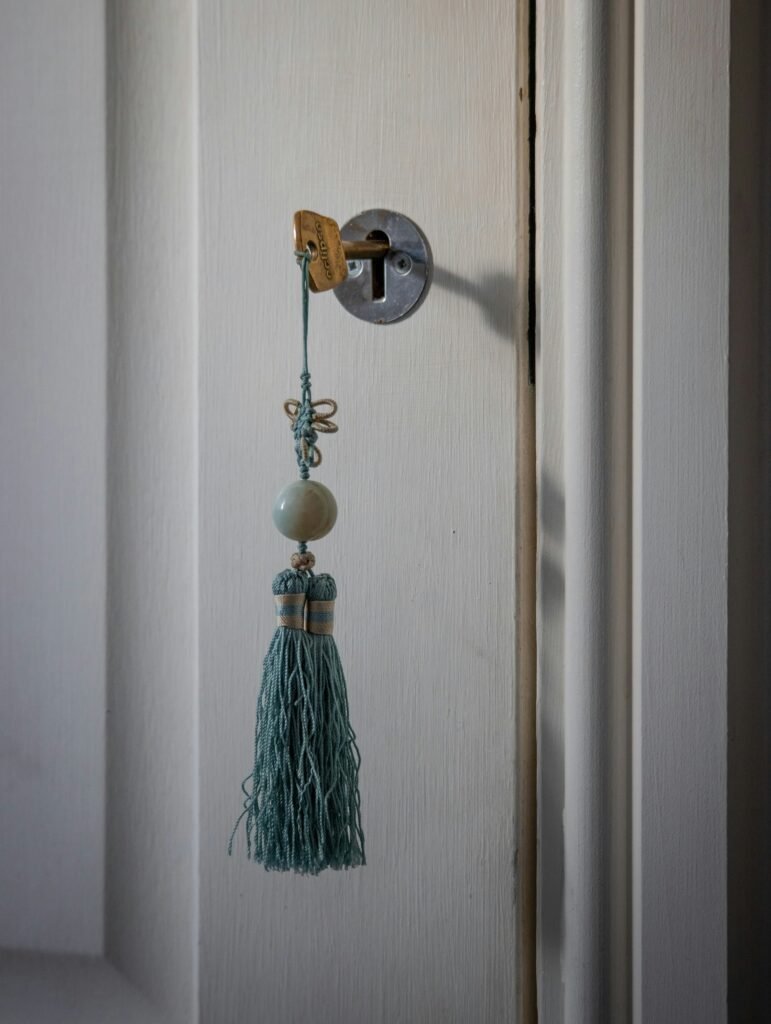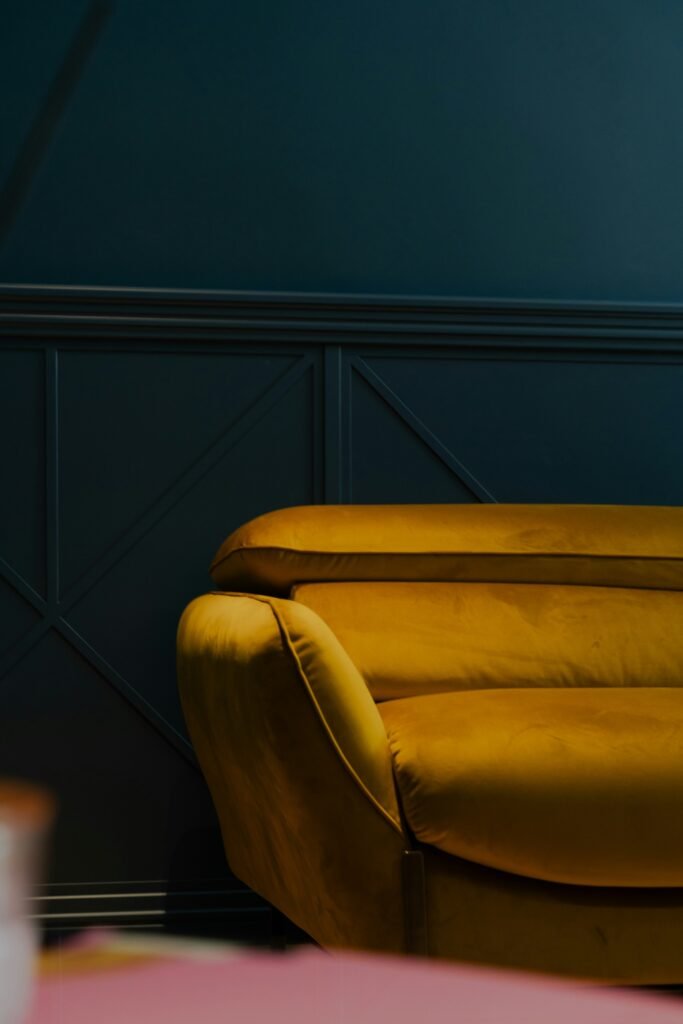? Can you combine the charm of vintage pieces with the clean lines of modern design without making your rooms look mismatched?

How Do I Mix Vintage And Modern Home Decor Styles?
Mixing vintage and modern home decor gives you a layered, personal look that feels curated rather than fussy. You’ll create a space that tells a story — combining the warmth of antiques or retro finds with the freshness and functionality of contemporary pieces.
Why mix vintage and modern?
Mixing these styles balances personality and practicality. Vintage items add history, character, and texture; modern pieces keep the space feeling light, functional, and current. When you combine them thoughtfully, you get an aesthetic that feels intentional and uniquely yours.
Who benefits from this approach?
You do, if you like pieces with stories but also want a home that functions for modern living. This approach suits people who want longevity and sustainability in decor, enjoy hunting for unique finds, or refuse to be constrained by one strict aesthetic.
Core Principles to Guide Your Mixing
You’ll get the best results when you use a few guiding principles. Think of them as rules of thumb that you can bend but not break.
Create a dominant direction
Decide whether the overall look will lean more modern or more vintage. That dominant direction provides a visual anchor and keeps the space cohesive. Use the dominant style for larger, more permanent elements like sofas, flooring, or major built-ins.
Balance contrast and harmony
Contrast (such as pairing a sleek sofa with an ornate side table) creates interest, while harmony in scale, color, or texture holds everything together. You’ll want both — contrast to keep things lively and harmony to prevent chaos.
Keep a consistent color story
A unified color palette ties disparate pieces together. Choose two or three dominant colors and a few accent shades. Even wildly different objects feel related when they share color tones.
Use repetition
Repeating shapes, colors, or materials throughout the room creates rhythm and cohesion. You might repeat brass finishes, wood tones, or a particular pattern to thread the room together.
Understand the Key Features of Each Style
Knowing the hallmarks of vintage versus modern will help you mix them with confidence. Use this table to quickly compare traits and decide which elements you want to emphasize.
| Element | Vintage (Old) | Modern (New) |
|---|---|---|
| Lines | Ornate, curved, decorative | Clean, straight, minimal |
| Materials | Wood, brass, velvet, ceramics | Glass, metal, concrete, sleek fabrics |
| Colors | Warm, muted, jewel tones, patina | Neutral, monochrome, bold accent colors |
| Patterns | Floral, damask, geometric retro | Minimal patterns, bold graphics |
| Scale | Often detailed and substantial | Often streamlined and low-profile |
| Functionality | Character over function (may need updating) | Designed for efficiency and ergonomics |
| Typical pieces | Antique cabinets, vintage rugs, chandeliers | Modular sofas, minimalist tables, modern lighting |
How to use this comparison
Use the table to pick complementary pieces rather than conflicting ones. For example, if you choose a modern sofa (clean lines), pair it with a vintage rug (pattern and warmth) and a mid-century side table (a bridge between eras).
Choosing a Color Palette
Color controls mood and cohesion. When you’re blending styles, your palette is your glue.
Build a base
Start with a neutral base — creams, warm whites, soft grays — so both vintage and modern elements can sit comfortably. Neutrals provide breathing room for more characterful items.
Add warm and cool accents
Mix warm vintage tones (mustard, olive, terracotta) with cool modern accents (charcoal, navy, slate). This contrast keeps the palette dynamic without clashing.
Use one linking color
Pick a color that appears in both vintage and modern pieces to create visual continuity. For example, a teal pillow on a contemporary sofa that echoes teal accents in a vintage painting connects eras.
Palette examples
| Style Blend | Base Colors | Accent Colors | Feel |
|---|---|---|---|
| Cozy Eclectic | Warm cream, soft taupe | Burnt orange, olive green | Comfortable, layered |
| Crisp Vintage | Cool white, pale gray | Teal, brass | Clean but nostalgic |
| Modern Retro | Charcoal, concrete gray | Mustard, avocado | Graphic, upbeat |
| Scandinavian Vintage | Soft white, pale wood tones | Dusty rose, sage | Light, warm, calm |
Scale, Proportion, and Placement
Size matters. You’ll need to consider scale and proportion so vintage and modern items feel intentional together.
Anchor with large modern pieces
Use a large modern piece (sofa, bed, rug) as an anchor for the room. It establishes scale and a neutral baseline for adding vintage accents.
Let vintage serve as punctuation
Use vintage pieces as accents or focal points rather than as dominating elements. A vintage chest, lamp, or art piece will feel purposeful when positioned like punctuation in a sentence.
Match proportions where possible
If a modern coffee table is low and horizontal, choose vintage seating with similar heights. Mismatched heights are fine if balanced across the room.
Placement tips
- Place a vintage object slightly off-center to create a casual, collected look.
- Group smaller vintage items together to create one strong vignette instead of scattering them randomly.
- Keep traffic flow in mind; bulky vintage furniture can impede circulation, so place it consciously.
Furniture Pairing Strategies
How you pair pieces determines whether the room feels curated or chaotic. Use these strategies when selecting and setting furniture.
Pair by function first
Start by ensuring furniture meets functional needs: comfortable seating, adequate storage, and proper lighting. Then add aesthetic layers.
Contrast textures
Pair smooth modern surfaces (lacquer, glass) with textured vintage elements (distressed wood, embroidered fabric). Texture contrast brings depth.
Bridge styles with transitional pieces
Transitional pieces—mid-century modern furniture or contemporary items with classic details—make excellent bridges. They have enough vintage character to match older pieces and enough simplicity to align with modern design.
Example pairings
- Modern sofa + vintage Persian rug + mid-century coffee table
- Sleek dining table + set of mismatched vintage chairs painted the same color
- Minimalist shelving + ornate antique mirror hung above

Lighting: The Unsung Hero
Lighting can make or break the mixed look. It sets mood and highlights focal points.
Layer light sources
Use ambient, task, and accent lighting to create depth. A modern recessed light provides general illumination, while a vintage lamp offers character for reading nooks.
Use fixtures as statement pieces
Lighting fixtures double as art. A modern geometric chandelier over a mismatched vintage dining table creates an intentional contrast that feels curated.
Consider scale and finish
Large vintage chandeliers can overwhelm modern rooms, so choose scale carefully. Use finishes deliberately: mix brass with matte black or use the same finish in small doses across the room to unify.
Rugs, Textiles, and Patterns
Textiles bring warmth and help tie different eras together. Pay attention to patterns and layering.
Layer rugs for depth
Place a vintage rug under a modern rug, or layer a small antique runner over a neutral modern rug. Layering adds texture and highlights both pieces.
Mix patterns thoughtfully
If your vintage rug has a busy pattern, keep other patterns minimal. Conversely, a modern room with solid fabrics welcomes a patterned vintage cushion or curtains.
Use textiles to repeat colors
Throw pillows, blankets, and curtains offer easy ways to repeat key colors from both styles, creating harmony.
Art, Mirrors, and Wall Treatments
Wall decor unifies and elevates your mixed look. Use it to anchor themes and highlight vintage finds.
Art as a bridging device
Hang modern art above a vintage sideboard, or surround a vintage painting with modern frames. Your art choices can shift the perceived era of furniture pieces.
Mirrors to expand space
Vintage mirrors with patina add depth and character in modern spaces. Place them opposite windows to bounce light and show off decorative details.
Wall treatments
Wallpaper with subtle vintage motifs can work in a modern layout if you keep the rest of the room simple. Painted wainscoting or paneled walls also pair beautifully with modern furnishings.

Accessories and Styling Tips
Accessories are where you show personality. Choose them carefully to avoid clutter.
Edit ruthlessly
You don’t need every vintage find on display. Rotate items seasonally and keep surfaces neat. Less is often more when mixing eras.
Group items in odd numbers
Groupings of three or five items tend to feel balanced and natural. Use small vintage objects together on a modern mantel or coffee table.
Use functional accessories
Choose accessories that add function: vintage trunks as coffee tables, old crates as storage, or an antique tray for barware. They look intentional and serve a purpose.
Let one vintage element be the star
Make one vintage piece the focal point — a grand mirror, an ornate cabinet, or a retro sofa. Let supporting modern pieces play a secondary role.
Room-by-Room Advice
Different rooms require different approaches. Here are practical strategies you can use right away.
Living room
Your living room should balance comfort and style. Use a modern sofa as your base, layer a vintage rug, and add a classic armchair. Keep the media area minimal and use vintage art or a statement lamp to add warmth.
Dining room
A modern dining table can be softened with a set of mismatched vintage chairs, or vice versa. Lighting is crucial — a vintage chandelier over a sleek table makes a strong, elegant statement.
Kitchen
Kitchens benefit from modern efficiency but can embrace vintage charm in hardware, open shelving, or an antique farmhouse table. Keep appliances modern for function and use vintage dishware or accessories for style.
Bedroom
Use a modern platform bed with vintage bedside tables or an antique dresser. Soft textiles, a vintage rug, and layered lighting will make the room feel cozy and collected.
Bathroom
Introduce vintage mirrors or hardware with modern sanitaryware. A clawfoot tub or patterned tile can feel at home alongside contemporary sinks and fixtures.
Common Mistakes and How to Avoid Them
Even with good intentions, mixing styles can go wrong. These warnings help you sidestep obvious pitfalls.
Too many competing focal points
If every item screams for attention, the room feels chaotic. Choose one or two focal points and let other pieces support them.
Overmatching finishes
Matching every metal finish (all brass or all chrome) might seem cohesive but can feel flat. Instead, repeat finishes in small doses across the room for harmony.
Ignoring scale
Small vintage items get lost in oversized modern rooms, while huge antiques can overwhelm minimalist spaces. Consider scale when buying.
Forgetting function
Don’t sacrifice comfort for looks. A gorgeous vintage chair that’s uncomfortable won’t get used; prioritize usability.
Shopping and Sourcing Tips
Where and how you shop affects both your budget and the uniqueness of your home.
Hunt intentionally
Shop with a list: size, color, function. That prevents impulse buys that don’t fit. Measure doorways and room dimensions before bringing large vintage pieces home.
Combine new and old
Pair thrift-store finds with a few quality modern purchases. Modern retailers often carry transitional pieces that bridge eras.
Consider restoration and refinishing
A little restoration can make a vintage piece usable and safe while preserving character. Reupholstering in a modern fabric is a common and effective update.
Negotiate and time purchases
Estate sales, auctions, and flea markets often offer opportunities to negotiate. Visit markets early for selection or late for bargains.
Maintenance and Longevity
Caring for a mix of old and new keeps your home looking polished and intentional.
Preserve vintage finishes
Protect patina you love; use gentle cleaners and avoid harsh chemicals. For wood, a careful wax or oil can help maintain integrity.
Update when necessary
If a vintage electrical item is unsafe, have it rewired. Small updates make vintage pieces functional without stripping their character.
Rotate and refresh
Periodically swap accessories or reposition pieces to keep your space feeling fresh. Rotating art or textiles can create a refreshed look without big purchases.
Checklist: Quick Steps to Mix Successfully
Use this practical checklist to guide your next room project.
| Step | Action |
|---|---|
| 1 | Decide the dominant style (modern or vintage) |
| 2 | Choose a cohesive color palette |
| 3 | Anchor with a large piece in your dominant style |
| 4 | Add one strong vintage focal point |
| 5 | Repeat a material or color for unity |
| 6 | Layer lighting (ambient, task, accent) |
| 7 | Mix textures and patterns thoughtfully |
| 8 | Edit accessories and group in odd numbers |
| 9 | Check scale and circulation before finalizing |
| 10 | Maintain and update vintage pieces as needed |
Sample Room Combinations
Here are a few curated combinations you can adapt to your home.
Modern Minimal + Mid-Century Vintage
Start with a low-profile modern sofa in a neutral tone. Add a teak mid-century coffee table, a vintage shag rug in muted colors, and a brass floor lamp. Keep other decor minimal to let the vintage highlights pop.
Industrial Modern + Rustic Vintage
Use exposed metal shelving and concrete surfaces with a distressed wooden dining table. Pair with vintage metal chairs or factory stools. Add warm textiles and a large vintage clock to soften the space.
Scandinavian Modern + Cottage Vintage
Choose light wood floors and a simple modern sectional. Add floral vintage cushions, a painted antique chest as a coffee table, and a handwoven rug. Soft pastel accents help unify the look.
Final Thoughts
Mixing vintage and modern home decor is an invitation to tell your story through objects. You get the practicality of contemporary design plus the warmth and personality of older pieces. By setting a dominant direction, maintaining a cohesive palette, minding scale, and editing carefully, you’ll create spaces that feel curated, comfortable, and unmistakably yours.
